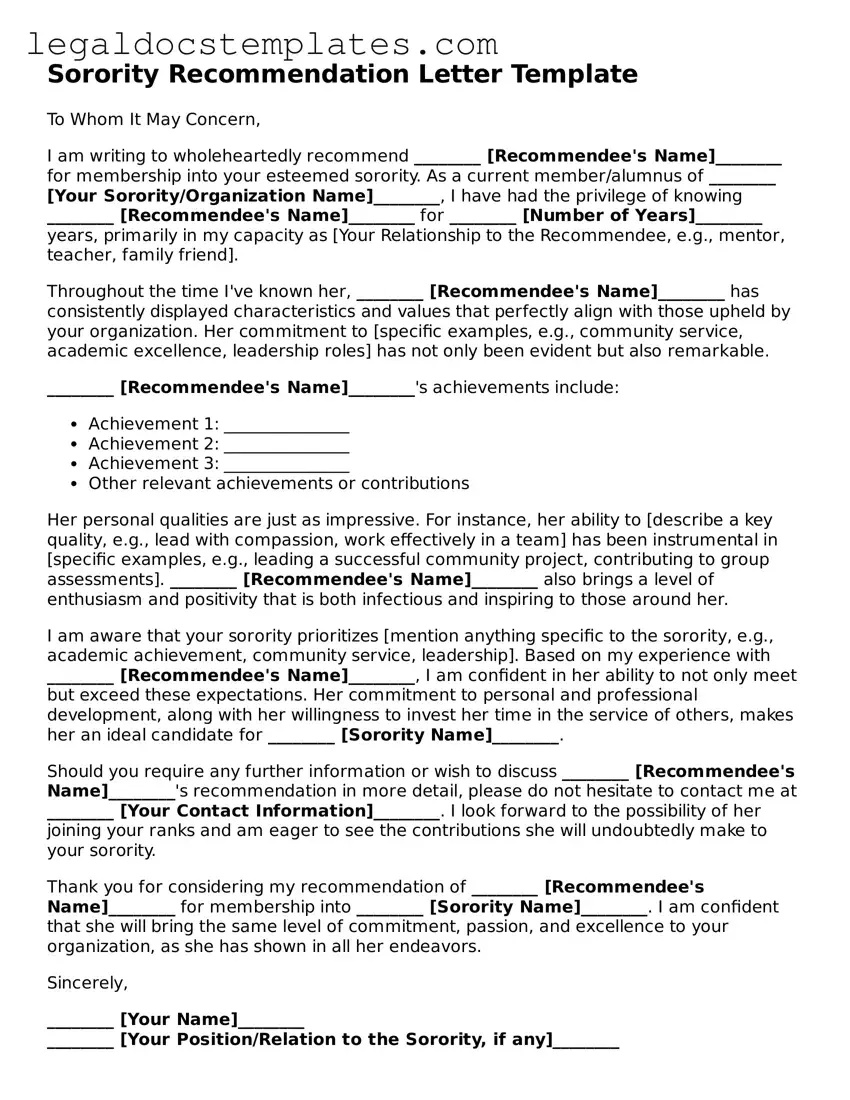Sorority Recommendation Letter Template
To Whom It May Concern,
I am writing to wholeheartedly recommend ________ [Recommendee's Name]________ for membership into your esteemed sorority. As a current member/alumnus of ________ [Your Sorority/Organization Name]________, I have had the privilege of knowing ________ [Recommendee's Name]________ for ________ [Number of Years]________ years, primarily in my capacity as [Your Relationship to the Recommendee, e.g., mentor, teacher, family friend].
Throughout the time I've known her, ________ [Recommendee's Name]________ has consistently displayed characteristics and values that perfectly align with those upheld by your organization. Her commitment to [specific examples, e.g., community service, academic excellence, leadership roles] has not only been evident but also remarkable.
________ [Recommendee's Name]________'s achievements include:
- Achievement 1: _______________
- Achievement 2: _______________
- Achievement 3: _______________
- Other relevant achievements or contributions
Her personal qualities are just as impressive. For instance, her ability to [describe a key quality, e.g., lead with compassion, work effectively in a team] has been instrumental in [specific examples, e.g., leading a successful community project, contributing to group assessments]. ________ [Recommendee's Name]________ also brings a level of enthusiasm and positivity that is both infectious and inspiring to those around her.
I am aware that your sorority prioritizes [mention anything specific to the sorority, e.g., academic achievement, community service, leadership]. Based on my experience with ________ [Recommendee's Name]________, I am confident in her ability to not only meet but exceed these expectations. Her commitment to personal and professional development, along with her willingness to invest her time in the service of others, makes her an ideal candidate for ________ [Sorority Name]________.
Should you require any further information or wish to discuss ________ [Recommendee's Name]________'s recommendation in more detail, please do not hesitate to contact me at ________ [Your Contact Information]________. I look forward to the possibility of her joining your ranks and am eager to see the contributions she will undoubtedly make to your sorority.
Thank you for considering my recommendation of ________ [Recommendee's Name]________ for membership into ________ [Sorority Name]________. I am confident that she will bring the same level of commitment, passion, and excellence to your organization, as she has shown in all her endeavors.
Sincerely,
________ [Your Name]________
________ [Your Position/Relation to the Sorority, if any]________
________ [Your Contact Information]________
